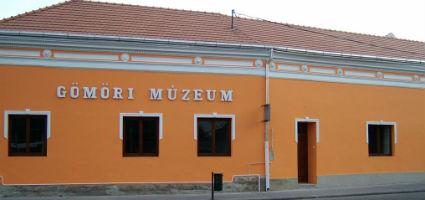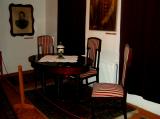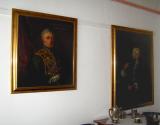2025. July 19. Saturday
Gömör Museum - Putnok
 |
Address: 3630, Putnok Serényi László tér 10
Phone number: (48) 430-292
E-mail: gomorimuz@gmail.com
Opening hours: *Mon-Fri 8.00-16.00, Sat 10.00-14.00
|
The Gömöri Museum of Putnok was opened in 1987 as a part of the county Museum of Borsod-Abaúj-Zemplém.
The word Gömör almost totally disappeared from the Hungarian vocabulary by today. After the world war people hardly knew the meaning of the expression. Apart from the museum the word can only be found in the name of a Hungarian railway station and a small village called Gömörszőlős.
For months after its opening only the word MUSEUM was placed on the front wall of the building. According to official explanations it was lack of finances that kept the first word Gömöri missing from the wall. However, several people seemed to find the reason somewhere else. They said there had been nobady who would have taken the initiative to place these words right in the neighbourhood of the Trianon border. The question was finally settled in 1987, when iron sculptors made the missing words to be fixed up where it is still seen today.
The founding of the institute was preceded by a resarch persued to find out more about Gömör. The work was initiated and directed by Zoltán Ujváry university teacher who, having been born in Gömör, held it important to intensively search the region's ethnographical values. The thought of founding a regional museum was first brought up by him, too.
A good number of institutes, financial units and private persons were supporting the establishment of the museum. They appointed a building for it in the town centre, which is one of the oldest buildings in Putnok. The famous historian of Putnok - Béla Balogh - refers to it as the customs house, and some maps mark the building as the Customs restaurant.
In the beginning of the 20th century, the owner of the house, György Friedl rebuilt and extended the building. At each phase of the building works he took photographs of the house and on one of the photographs he put: "The oldest house in Putnok from the 17th century - renovated in May 1910)". The Gömöri Museum opened its gates in this building on 27th February 1987.
Mónika Bodnár - Sándor Balogh
The word Gömör almost totally disappeared from the Hungarian vocabulary by today. After the world war people hardly knew the meaning of the expression. Apart from the museum the word can only be found in the name of a Hungarian railway station and a small village called Gömörszőlős.
For months after its opening only the word MUSEUM was placed on the front wall of the building. According to official explanations it was lack of finances that kept the first word Gömöri missing from the wall. However, several people seemed to find the reason somewhere else. They said there had been nobady who would have taken the initiative to place these words right in the neighbourhood of the Trianon border. The question was finally settled in 1987, when iron sculptors made the missing words to be fixed up where it is still seen today.
The founding of the institute was preceded by a resarch persued to find out more about Gömör. The work was initiated and directed by Zoltán Ujváry university teacher who, having been born in Gömör, held it important to intensively search the region's ethnographical values. The thought of founding a regional museum was first brought up by him, too.
A good number of institutes, financial units and private persons were supporting the establishment of the museum. They appointed a building for it in the town centre, which is one of the oldest buildings in Putnok. The famous historian of Putnok - Béla Balogh - refers to it as the customs house, and some maps mark the building as the Customs restaurant.
In the beginning of the 20th century, the owner of the house, György Friedl rebuilt and extended the building. At each phase of the building works he took photographs of the house and on one of the photographs he put: "The oldest house in Putnok from the 17th century - renovated in May 1910)". The Gömöri Museum opened its gates in this building on 27th February 1987.
Mónika Bodnár - Sándor Balogh

